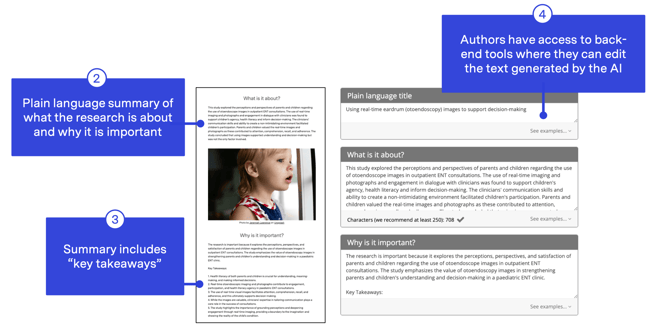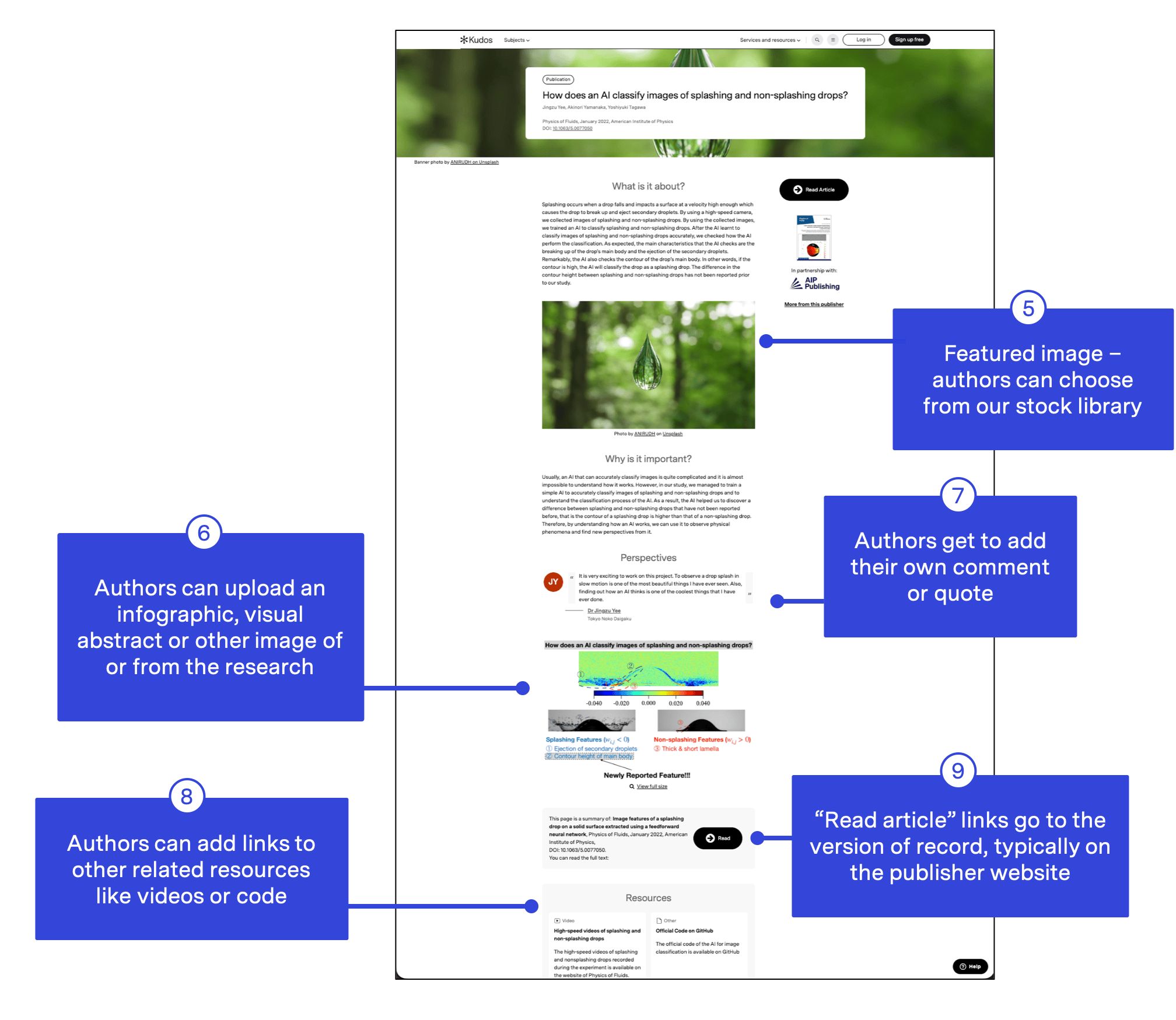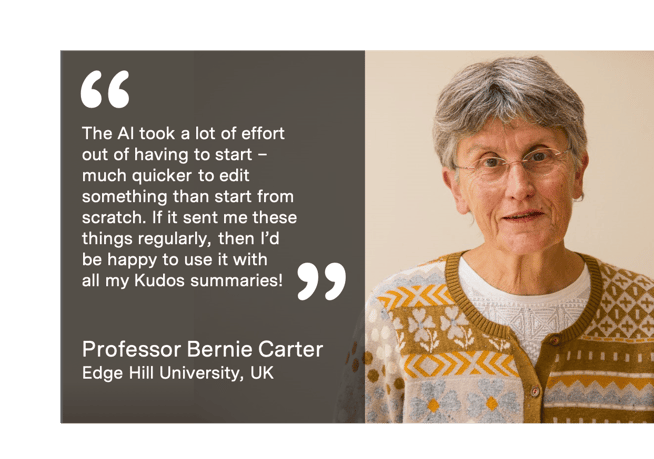As part of our work to introduce AI-generated summaries of research publications, we have worked with some of our publisher partners to test the quality of AI summaries, and explore how authors feel about them. We received such a positive response that we are now rolling out our AI summaries more widely.
First, let’s break down what an AI-generated Story page on Kudos looks like.

Simplified titles
Right at the top (1) we have the plain language title – this is the title of the summary, rather than of the original article. In our example, the original paper is called “Grounding perceptions: the value of otoendoscopy images in strengthening parents and children's understanding and decision making in a pediatric ENT clinic”. This is an important level of detail for specialists determining whether the article is likely to be relevant or useful to them. But it's hard to see that at a glance. In this age of information overload, summarized versions of titles are valuable even to specialists – when you are skimming through a long reading list or table of contents, it can help you "triage" which articles to look at more closely. Simplifying the language used in titles also helps them to rank more highly in search engines, and of course they are easier for people in adjacent fields, or practitioners, patients and policy makers, to understand. Our AI-generated version simplifies titles – in this case, to “Using real-time eardrum images to support decision-making”. Easier for specialists to assess, easier for non-specialists to understand.

What it is about and why it is important
The main text on the page (2) is broken into two paragraphs, answering the questions “what is this about?” and “why is this important?”. This is quite different to the original article abstract, which follows the scientific structure of outlining methods and results. Our focus is on drawing out the “key takeaways” (3) that need to be understood both by other researchers, but also by broader audiences including healthcare practitioners, patients, policy makers and educators. Authors can use Kudos tools to review and edit the summary that has been written by AI (4).

Extra Storytelling features
Kudos is a leader in research storytelling, and part of this is bringing research to life with magazine-style illustrations and quotes. Authors can choose a featured image to illustrate their AI-generated summary (5), upload a visual abstract, infographic or an image from the research (6), and add a quote (7). They can also add links to related materials such as videos, code, datasets, press coverage and more (8). “Read article” links go to the version of record, typically on the publisher website.

Authors’ feedback
Our test process generated a plain language title, text for “what’s it about” and “why is it important”, and key takeaways. We created basic story pages with this information and shared these with authors to review. At this point, pages did not have images, quotes from authors, or extra resources – these were all options for authors to add if they liked their page. We followed up with authors to share their page with them and ask them to rate how well the AI had done in summarizing their article. The results were really encouraging:
In conclusion
One of our favourite bits of feedback came from Professor Bernie Carter of Edge Hill University, who summed up one of the main benefits of using AI to generate research summaries:
- Read the AI-generated Story of Bernie’s research
- Find out how Kudos can help you leverage AI to summarize and showcase your publications.
- Previous post: AI Summaries by Kudos: what we’re doing
- Coming soon: AI Summaries by Kudos – results for publishers



